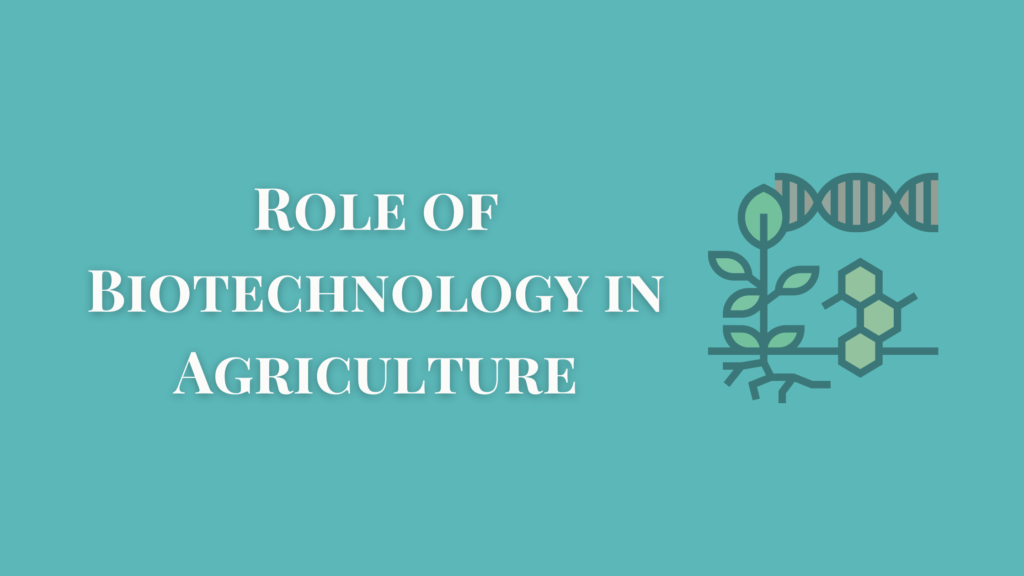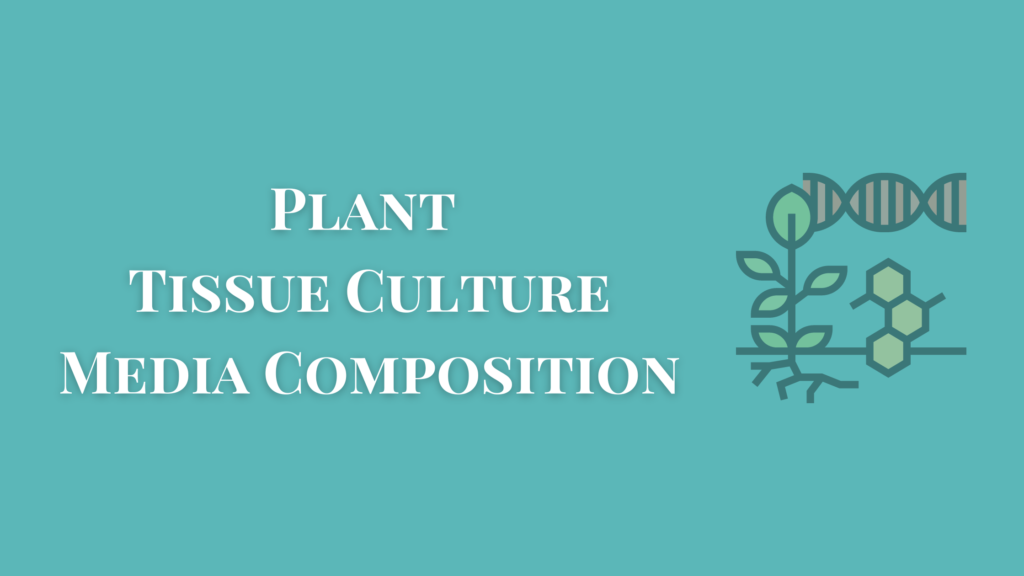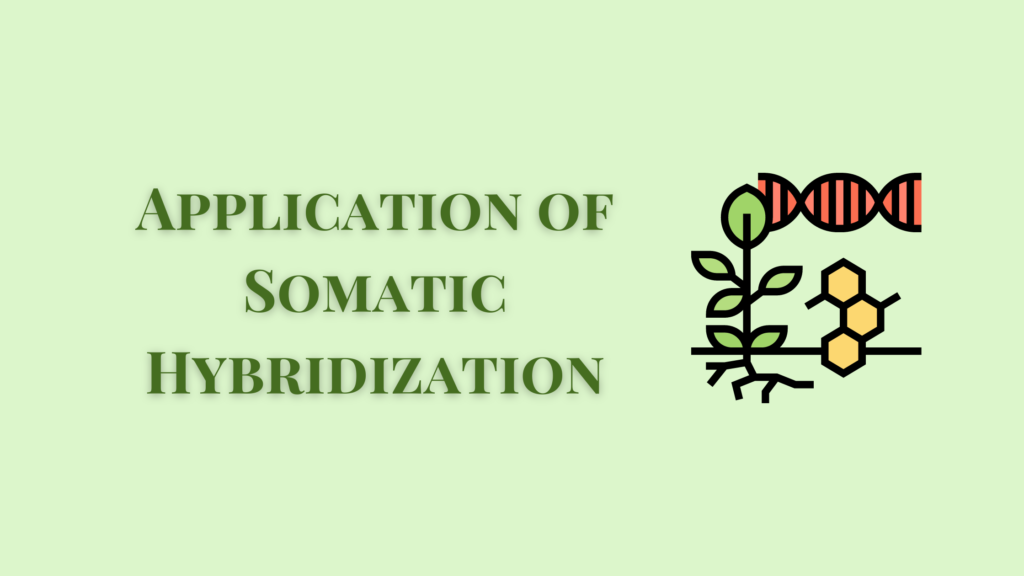The role of biotechnology in agriculture is to protect the crops from the various factors such as pests, infections, diseases, yield, etc that affect them negatively. The main objectives are disease-free plants, fortified crops, making the plants pest-resistant, and improving the overall yield through various manipulating processes.
Biotechnology has caused a revolution in agricultural science. Many aspects of modern biotechnology are now being applied increasingly in agriculture. Agriculture in many parts of the world to achieve vertical integration between production and ultimate utilization.
Humans are dependent on agriculture. As the world population continues to expand there must be continuous reassessment of agricultural practices to optimize their efficiency. However, agriculture is a politically sensitive area with many selective trade barriers.
Biotechnology tools have increased our capacity to reduce costs and enhance production efficiency. The revolution created by genetic engineering in agriculture has led to an increasing range of species in plants.
The role of biotechnology in agriculture is summarized below.
Role of Biotechnology in Agriculture
During the last few decades plant cell tissue and organ culture have developed rapidly and become a major biotechnological tool in agriculture.
Improvement of Hybrids
The development of cell fusion and hybridization techniques has solved the problem of incompatibility of plants and widened the scope of production of new varieties within a short time.
Somatic hybrid plants inherited many characteristics such as intermediate relief, morphology, stomata, prolonged flowering, large and fertile pollen grains, higher yield, resistance against viruses, etc.
The anther culture is used in crop breeding and improvement and derived wheat and rice varieties. More than 50 varieties of these grains have been developed using this technique.
Formation of Artificial Seeds
Production of encapsulated somatic embryos or artificial seeds is another major role of biotechnology in agriculture. Such synthetic seeds can be used for crop production which reduces the cost of transplantation. These are suitable for large-scale production of monocultures that generate mixed-genotype plantations. They may also be used as an alternative for meiotically-unstable genotypes.
Production of Disease Resistant Plants
Many plant species which propagate vegetatively are systematically infected by viruses, bacteria, fungi, nematodes, etc. Their inoculum is carried over several generations resulting in continued adverse effects on productivity and quality of crops.
Tissue culture techniques have solved the problem and minimized the time of biological testing and establishment of pathogenicity and crop cross. Now it has become possible to carry out such experiments in the laboratory within a short period using tissue culture techniques.
Production of Stress-Resistant Plants
Biotechnology is used to produce stress-resistant plants that can withstand abiotic stress. Various genes that are resistant to abiotic stress have been identified. These genes can be incorporated into the crop plants using different gene manipulation methods in plants.
Transfer of Nitrifying Gene to Eukaryotes
Nitrogen-fixing ability, a genetic character, exists in prokaryotes. However one of the major tasks is the transfer of this character to eukaryotes. In recent years research has been done to solve this problem through tissue culture techniques coupled with recombinant DNA technology.
Historically nitrogen fixation by rhizobia was believed to occur through symbiosis. For the first time, excitement was caused in the scientific community with the discovery by Holstent et al (1971). They obtained the active rhizobia in the axis of nodules, leghemoglobin, which is necessary for intact plants.
In addition to work done successfully on nif gene transfer, other important genes have also been cloned. For example, storage protein genes in soybeans, and genes of ribulose bisphosphate carboxylase in peas, maize, wheat, etc.
Role of Biotechnology In Horticulture & Forestry
Micropropagation
The application of micropropagation techniques as an alternative to asexual propagation has increased the interest of farmers, especially regarding important plants and crops. In this method, only a small amount of tissue is needed as the initial for the regeneration of millions of clonal plants in a year.
This is an effective alternative for developing resistant varieties. It provides a means for the international exchange of plant material valuable germplasm can be stored for a long time.
Many of the studies are aimed at the large-scale micropropagation of important trees yielding pulp, timber, oils and fruits. Therefore clonal forestry and horticulture are gaining increasing recognition as an alternative for tree improvement, for betterment and improvement of tree plants of high economic value.
A breakthrough in forestry research has come with the production of artificial seeds and genetic transformation. Examples of this are seen in Eucalyptus and in the in vitro regeneration of conifers. Moreover, micropropagation has been successfully done in many trees.
In-vitro Establishment of Mycorrhiza
Mycorrhizal fungi show the highest level of specialization of parasitism and a major problem with them is their failure to grow on an artificial medium in the laboratory. Therefore, establishment and multiplication of mycorrhizal fungi on culturing tissue on the same host plant.
If successfully developed, it may be a good tool for handling mycorrhizal fungi, production of high potential inoculum, and their establishment in root systems of nursery plants in horticulture and forestry and plantations of mycorrhiza injected seedlings in the field.
Only one report available on this work successfully produced strawberry plants by tissue culture which were injected by a mycorrhizal fungi.
Biofertilizers
In recent years, mycorrhizal inoculants as a source of biofertilizers have become a hope for most countries, as far as economic or environmental viewpoints are concerned. Biologically fixed nitrogen is such a source that can apply an adequate amount of nitrogen to plants and other nutrients to some extent.
It is a non-hazardous way of fertilizing fields. Moreover, biologically fixed nitrogen consumes about 25-30% less energy than is normally done by the process. Therefore in developing countries like India, it can solve the problem of high cost of fertilizers and help in preserving the economy of the country. As bacteria and cyanobacteria are known to fix atmospheric nitrogen, both of them are widely used as biofertilizers.




